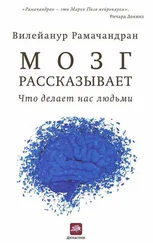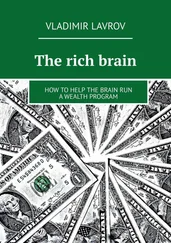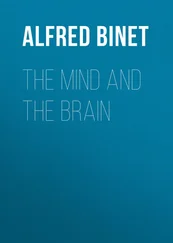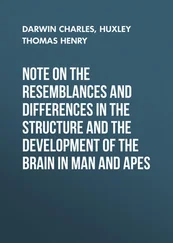As a physician I was aware that phantom limb pain poses a serious clinical problem. Chronic pain in a real body part such as the joint aches of arthritis or lower backache is difficult enough to treat, but how do you treat pain in a nonexistent limb? As a scientist, I was also curious about why the phenomenon occurs in the first place: Why would an arm persist in the patient’s mind long after it had been removed? Why doesn’t the mind simply accept the loss and “reshape” the body image? To be sure, this does happen in a few patients, but it usually takes years or decades. Why decades — why not just a week or a day? A study of this phenomenon, I realized, might not only help us understand the question of how the brain copes with a sudden and massive loss, but also help address the more fundamental debate over nature versus nurture — the extent to which our body image, as well as other aspects of our minds, are laid down by genes and the extent to which they are modified by experience.
The persistence of sensation in limbs long after amputation had been noticed as far back as the sixteenth century by the French surgeon Ambroise Paré, and, not surprisingly, there is an elaborate folklore surrounding this phenomenon. After Lord Nelson lost his right arm during an unsuccessful attack on Santa Cruz de Tenerife, he experienced compelling phantom limb pains, including the unmistakable sensation of fingers digging into his phantom palm. The emergence of these ghostly sensations in his missing limb led the sea lord to proclaim that his phantom was “direct evidence for the existence of the soul”. For if an arm can exist after it is removed, why can’t the whole person survive physical annihilation of the body? It is proof, Lord Nelson claimed, for the existence of the spirit long after it has cast off its attire.
•
The eminent Philadelphia physician Silas Weir Mitchell 2 first coined the phrase “phantom limb” after the Civil War. In those preantibiotic days, gangrene was a common result of injuries and surgeons sawed infected limbs off thousands of wounded soldiers. They returned home with the phantoms, setting off new rounds of speculation about what might be causing them. Weir Mitchell himself was so surprised by the phenomenon that he published the first article on the subject under a pseudonym in a popular magazine called Lippincott’s Journal rather than risk facing the ridicule from his colleagues that might have ensued had he published in a professional medical journal. Phantoms, when you think about it, are a rather spooky phenomenon.
Since Weir Mitchell’s time there have been all kinds of speculations about phantoms, ranging from the sublime to the ridiculous. As recently as fifteen years ago, a paper in the Canadian Journal of Psychiatry stated that phantom limbs are merely the result of wishful thinking. The authors argued that the patient desperately wants his arm back and therefore experiences a phantom — in much the same way that a person may have recurring dreams or may even see “ghosts” of a recently deceased parent. This argument, as we shall see, is utter nonsense.
A second, more popular explanation for phantoms is that the frayed and curled-up nerve endings in the stump (neuromas) that originally supplied the hand tend to become inflamed and irritated, thereby fooling higher brain centers into thinking that the missing limb is still there. Though there are far too many problems with this nerve irritation theory, because it’s a simple and convenient explanation, most physicians still cling to it.
There are literally hundreds of fascinating case studies, which appear in the older medical journals. Some of the described phenomena have been confirmed repeatedly and still cry out for an explanation, whereas others seem like far-fetched products of the writer’s own imagination. One of my favorites is about a patient who started experiencing a vivid phantom arm soon after amputation — nothing unusual so far — but after a few weeks developed a peculiar, gnawing sensation in his phantom. Naturally he was quite puzzled by the sudden emergence of these new sensations, but when he asked his physician why this was happening, the doctor didn’t know and couldn’t help. Finally, out of curiosity, the fellow asked, “Whatever happened to my arm after you removed it?” “Good question”, replied the doctor, “you need to ask the surgeon”. So the fellow called the surgeon, who said, “Oh, we usually send the limbs to the morgue.” So the man called the morgue and asked, “What do you do with amputated arms?” They replied, “We send them either to the incinerator or to pathology. Usually we incinerate them.”
“Well, what did you do with this particular arm? With my arm?” They looked at their records and said, “You know, it’s funny. We didn’t incinerate it. We sent it to pathology.”
The man called the pathology lab. “Where is my arm?” he asked again. They said, “Well, we had too many arms, so we just buried it in the garden, out behind the hospital.”
They took him to the garden and showed him where the arm was buried. When he exhumed it, he found it was crawling with maggots and exclaimed, “Well, maybe that’s why I’m feeling these bizarre sensations in my arm.” So he took the limb and incinerated it. And from that day on, his phantom pain disappeared.
Such stories are fun to tell, especially around a campfire at night, but they do very little to dispel the real mystery of phantom limbs. Although patients with this syndrome have been studied extensively since the turn of the century, there’s been a tendency among physicians to regard them as enigmatic, clinical curiosities and almost no experimental work has been done on them. One reason for this is that clinical neurology historically has been a descriptive rather than an experimental science. Neurologists of the nineteenth and early twentieth centuries were astute clinical observers, and many valuable lessons can be learned from reading their case reports. Oddly enough, however, they did not take the next obvious step of doing experiments to discover what might be going on in the brains of these patients; their science was Aristotelian rather than Galilean. 3
Given how immensely successful the experimental method has been in almost every other science, isn’t it high time we imported it into neurology?
Like most physicians, I was intrigued by phantoms the very first time I encountered them and have been puzzled by them ever since. In addition to phantom arms and legs — which are common among amputees — I had also encountered women with phantom breasts after radical mastectomy and even a patient with a phantom appendix: The characteristic spasmodic pain of appendicitis did not abate after surgical removal, so much so that the patient refused to believe that the surgeon had cut it out! As a medical student, I was just as baffled as the patients themselves, and the textbooks I consulted only deepened the mystery. I read about a patient who experienced phantom erections after his penis had been amputated, a woman with phantom menstrual cramps following hysterectomy, and a gentleman who had a phantom nose and face after the trigeminal nerve innervating his face had been severed in an accident.
All these clinical experiences lay tucked away in my brain, dormant, until about six years ago, when my interest was rekindled by a scientific paper published in 1991 by Dr. Tim Pons of the National Institutes of Health, a paper that propelled me into a whole new direction of research and eventually brought Tom into my laboratory. But before I continue with this part of the story, we need to look closely at the anatomy of the brain — particularly at how various body parts such as limbs are mapped onto the cerebral cortex, the great convoluted mantle on the surface of the brain. This will help you understand what Dr. Pons discovered and, in turn, how phantom limbs emerge.
Читать дальше












